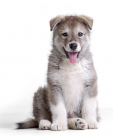Alaskan Malamute
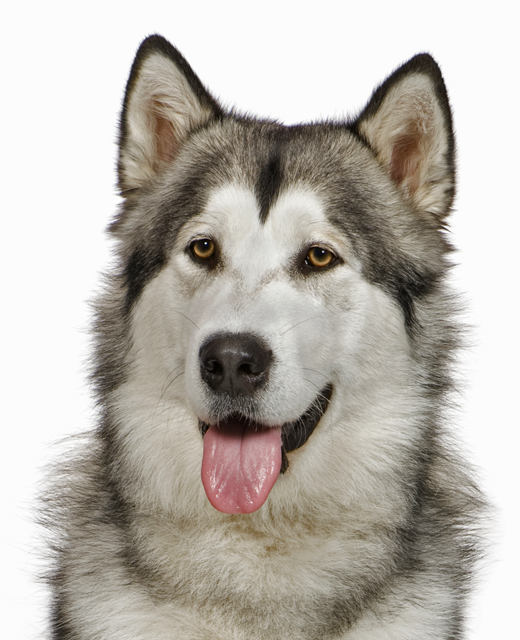
In my own words
Sure, I’m big, I have large teeth and I look a lot like a wolf, but I’m not as scary as I might seem! Actually, I’m really just a big old softie. Some people think I’d make a ferocious guard dog, but I’m more likely to give an intruder a friendly lick than scare him off… sorry! I just love to make new friends, whoever they might be. I love it when you have visitors over because I get to say hello to lots of new people. How could you not enjoy that? Why don’t you have a party? That way, I can get lots of pats and tummy rubs from loads of different people!
When I’m not making new friends, I like to get out and about. I’m a pretty active, sporty dog. Actually, I’m VERY active and sporty. Running, jogging, hiking, long walks, swimming, hunting… I do it all. Oh and if it’s snowing and you happen to have a sled around then I’d be happy to pull it! After all, that’s what I was born to do. Just, whatever you do, promise you won’t leave me on my own OK? I tend to get upset when I don’t have company around.
My ideal owner(s)
People who live in cold climates
County folk
People who enjoy the outdoors
Active people
Families
Experienced dog owners
What they say about me
Gentle giant
Loyal
Affectionate and loving
Playful yet mellow
Eager to please
Wolf like appearance
Please read on to find out more about me, and whether I’ll be someone you’ll be happy to live with for the next 15 years!
Is this Alaskan Malamute for you?
Test your knowledge about the Alaskan Malamute
Information essential about the Alaskan Malamute
Kennel Club Group:
Working
Size:
Large: Weight Male 84 – 123 lb (38 – 56 kg) Female 84 – 123 lb (38 – 56 kg)
Height Male 25 – 28” (64 – 71 cm) Female 23 – 26” (58 – 66 cm)
Popularity:
The Alaskan Malamute has long been loved as a family pet and is a popular animal in films and written stories, including in Rudyard Kipling. Over the past few years, the Malamute has received a surge of popularity in the UK due to their lovable, loyal, gentle and wonderfully social nature.
Breed History:
Originating from Northwestern Alaska and dating back around 2000 years, the Malamute was developed by a tribe of Inuit called the Mahlemuts who needed a dog which could cope with the extreme cold weather and hauling heavy loads like food and supplies, whilst also being a skilled hunter. The breed was created from a mix of Russian Samoyed, Siberian Husky, Labrador and the Eskimo dogs of Greenland.
There is a common myth that the Malamute is descended from the Arctic Wolf, however this is in fact not true. The Malamute is not a hybrid of dog and wolf and attempting to breed Malamutes with wolves is firmly discouraged.
The Malamute has an important part in history, as it assisted on the polar expeditions undertaken by explorers Perry, Cook and Byrd. They were integral to pulling heavy loads on the expeditions.
The Malamute is not a fast dog and it is more used for power and strength than speed. During the gold rush era in America, some breeders tried to make the Malamute quicker by breeding it with speedier Arctic dogs, but breed enthusiasts such as the Seeleys worked hard to purify the breed and return it to its original breed standard and slow, strong pace.
Character:
Your Alaskan Malamute is a loveable, charming, people loving dog. Malamutes will make friends with anyone and everyone, and love to play. Their friendly nature means they don’t make good watch or guard dogs, but they are fantastically sociable around your guests and visitors and wonderful with children. Your Malamute’s strong prey drive means that he should be supervised around smaller animals and non-canine pets. Though a playful dog, Alaskan Malamutes tend to mature into mellow, relaxed and easy going pets that are a content member of the family and cause little trouble. Your Malamute was bred to work and the breed was originally used to haul sleds and freight, so they need a substantial amount of exercise and mental stimulation. This is not a breed that will live happily as a couch potato, so owners need to be prepared to take their Malamute on long and vigorous walks – jogging is even better! Due to their size and energy they are not suitable for life in an apartment and will do best in a house with a large enclosed garden. Be sure to install a high fence with a buried base as your Malamute loves to explore and dig.
Temperament:
Your Alaskan Malamute is a true pack dog and hates to be left alone. If you will not be able to stay with your dog throughout the day, then a Malamute is not a suitable breed for your lifestyle as he will become stressed, anxious and upset leading to behaviour problems such as destruction. Generally, Alaskan Malamutes get on well with other dogs but they may show dominance to dogs of the same gender. Despite the Malamute’s wolf like appearance your Malamute is wonderfully gentle and can be trusted around children, though they should be trained to treat children with particular care and not be left unsupervised while with children. As your Malamute was bred to be a working dog and he has a lot of energy to burn up, he will thoroughly enjoy agility classes. It’s important to train your Alaskan Malamute from an early age and to teach him that he is not dominant over the rest of the household. These dogs are large and require a confident owner who will show the Malamute an air of authority in order to create a submissive, content pet who shows respect. Most Malamutes are fairly quiet, however they do like to occasionally howl or let out a ‘woo woo’ sound which is typical for the breed.
Conformation:
The Alaskan Malamute is often mistaken for the Siberian Husky. The breed shows a sturdy, substantial, powerful and large frame. The head is broad with a faint furrow between the eyes, which are almond shaped and brown. Triangular ears stand erect and the nose is usually brown but may also be streaked in lighter coloured dogs. The muzzle’s length and depth is almost uniform throughout and the large teeth meet in a scissor bite. The body is heavily boned and well-muscled with a deep, strong chest and strong, slightly arched neck. The tail has a plume like appearance which follows the line of the spine and is used by the dog to wrap around the face and body during cold weather. The Alaskan Malamute’s coat has a thick and coarse outer coat of a moderate length and oily, dense undercoat. The coat was originally used to protect the Malamute from harsh, snowy conditions in Alaska.
Colour:
The Alaskan Malamute’s coat commonly ranges from light grey to shadings of black, but also comes in sable to shadings of sable and red. The face markings are a distinguishing feature of the breed and show a cap over the head with a white face that may be marked with a bar or mask.
Training:
Your Alaskan Malamute will be a pleasure to train providing you use the correct training methods and show him you’re in charge. This is because he is not only highly intelligent but also loves to please his family. However, as your Malamute is a dominant breed he needs an owner who will be firm, consistent and confident with training otherwise he will be unlikely to listen and show obedience to you. Positive, reward based training with plenty of praise and affection will yield the best results from your Malamute as well as creating a well-mannered, polite and happy pet.
Care:
Your Malamute’s heavy coat requires a good amount of grooming in order to keep it healthy. Daily brushing is an absolute necessity, and you may even want to brush him more than once a day when he goes through the shedding seasons which occur twice each year. Baths generally aren’t necessary with the Alaskan Malamute as his coat is resistant to dirt and bathing can actually harm the protective coating the coat has. Dry shampooing every other month should be enough to keep his coat clean. Be sure to brush his teeth a few times per week and trim the nail regularly as they grow.
Health:
The Alaskan Malamute is a generally healthy breed, though dogs in the UK tend to suffer from more health problems than elsewhere, such as the USA, as they were bred from a smaller gene pool. Hip dysplasia can be an issue for the Malamute as can chrondodysplasia and polyneuropathy, a condition in which issues occur with muscle tone and weakness. Cataracts and vision problems are a known problem for older Alaskan Malamutes. The average lifespan of the Alaskan Malamute is between 9 and 15 years.
You may also like:
Alaskan Malamutes looking for a home in UK »

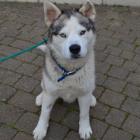
If you like Alaskan Malamutes, you may be interested in breeds of the same size »

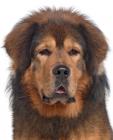
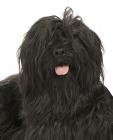
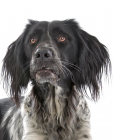

If you like Alaskan Malamutes, you may like other breeds with similar characteristics »
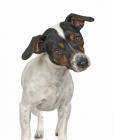
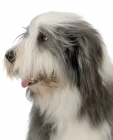
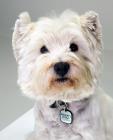
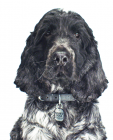
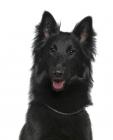
If you like Alaskan Malamutes, you may be interested in these other working dogs »
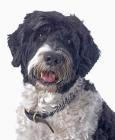

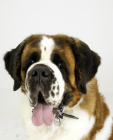
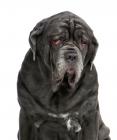
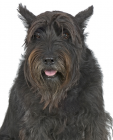
Advice on choosing your breed »
Find an animal shelter or rescue home where a Alaskan Malamute is waiting for a new home »
The following grid gives a fast track review which covers all breeds. You can apply it to help you decide if an Alaskan Malamute is suitable for you, the environment where you live, your personality and your lifestyle. On the grid, 1 = strongly disagree, and 5 = strongly agree. For example, if you are looking for a dog that you can take on long walks, look down the list under ‘activities’ and you will see that Alaskan Malamutes are excellent jogging companions, scoring 5. If you are looking for a dog that would make a good watch dog, look under ‘role and suitability’ and you’ll see an Alaskan Malamute would not be a good choice, scoring just 1. You might like to save or print off this section and keep it for reference while you check some other breeds before making your choice.
Be the first to rate this breed »
|
*PLEASE NOTE: All our breed profiles are general, and all dogs are individuals. Always talk to the breeders and meet the owners you are buying from. Try to meet the dog and its parents if it is a puppy in their home environment.









